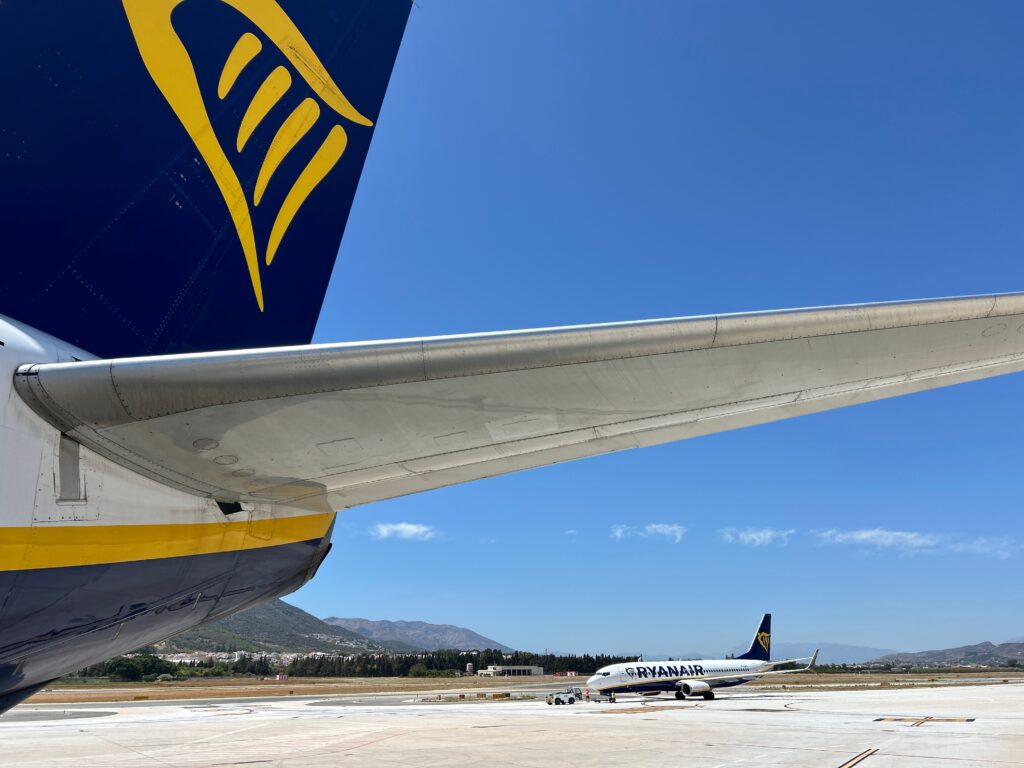Ryanair cuts Spain 2025: Budget airline Ryanair has announced a significant reduction in its Spanish operations for the summer of 2025, slashing 800,000 seats across regional airports. The airline blames “excessive” fees imposed by Spain’s airport operator, Aena, while Aena has accused Ryanair of using aggressive tactics to force for free or reduced access to Spanish airports.
Ryanair’s Withdrawal Affects Regional Airports
The airline will scale back its services at seven Spanish airports, with Jerez and Valladolid facing the most significant impact, as Ryanair pulls out entirely. Valladolid, in particular, will only have one remaining airline, Binter Canarias, with limited connections. In contrast, Jerez will still see continued operations by Binter, Air Nostrum, and Vueling.
Other airports facing reduced Ryanair services include Vigo, which will lose 61% of its flights, and Santiago, where capacity will drop by 28% due to the removal of one based aircraft. Smaller reductions will also affect Zaragoza, Asturias, and Santander. As a result, 12 routes will be discontinued, leading to an 18% reduction in Ryanair’s total operations in Spain.
Dispute Over Airport Fees and Incentives
Ryanair CEO Eddie Wilson has criticized Aena’s airport charges, claiming they are too high and undermine the potential for growth at regional airports. Aena, however, counters that its charges are competitive within Europe. As of March 2024, the fees will remain frozen at €10.35 per passenger, with additional incentives for smaller airports, including a 100% discount on charges for passenger traffic above 2023 levels. This could lower Ryanair’s per-passenger fee to just €2 at eligible airports.
Maurici Lucena, President of Aena, has questioned Ryanair’s claims of unprofitability, pointing out that flights from regional airports are consistently full. He has accused Ryanair of using aggressive tactics to gain financial leverage, calling the airline’s strategy a form of “blackmail.”
Aviation Industry Challenges and Rising Costs
Ryanair’s decision comes amid rising operational costs in the aviation industry, driven by inflation and increases in fuel, wages, and services. While Ryanair has passed these costs onto passengers, airfare increases have been substantial—ranging from 16% to 38% since 2019. Airport charges, however, have risen more slowly at around 13.6%, according to the Airports Council International (ACI).
Despite these rising costs, Ryanair’s frustrations are partly rooted in Aena’s approval of a 4.09% fee increase for 2024, which added €0.40 per passenger. A proposed €0.05 increase for 2025 was rejected by regulators. In response, Ryanair has opted to reallocate its capacity to other European markets.
Ryanair’s Strategy Questioned by Aena
Lucena has raised doubts about the validity of Ryanair’s claims, noting that despite the cuts, the airline increased its overall operations in Spain by 8.7% in 2024. Even with the 2025 reductions, Ryanair plans to grow its operations by another 5%, focusing on major airports like Madrid and Barcelona.
According to Aena, the 800,000 seats Ryanair plans to cut represent just 1.21% of its total passenger traffic in 2024. Lucena accused Ryanair of using business-driven route reductions as a means of exerting political pressure, even suggesting that some of Ryanair’s tactics could violate Spanish law.
Looking Ahead: Regional Connectivity at Risk
While Ryanair remains a dominant player in Europe’s low-cost travel market, the airline’s ongoing dispute with Aena underscores the complexities of maintaining a sustainable airline operation while balancing airport management. For passengers, the cuts could mean fewer low-cost options in several Spanish regions, with a growing focus on larger, more profitable airports. The long-term effects on regional connectivity and tourism are still uncertain, and stakeholders in affected areas are urging Ryanair to reconsider its approach.
Ryanair cuts Spain 2025
For more Business News, please click here.


